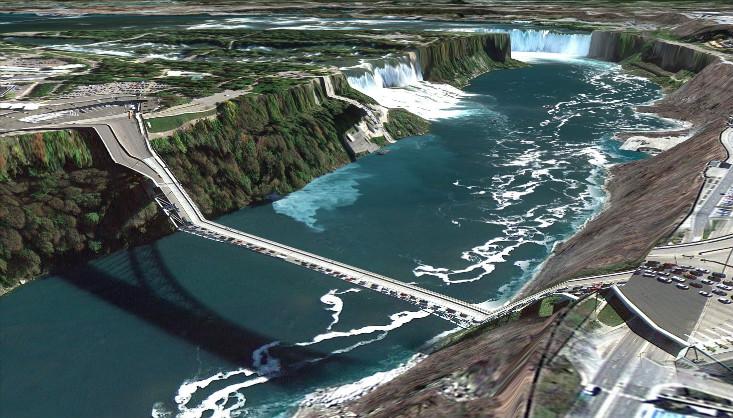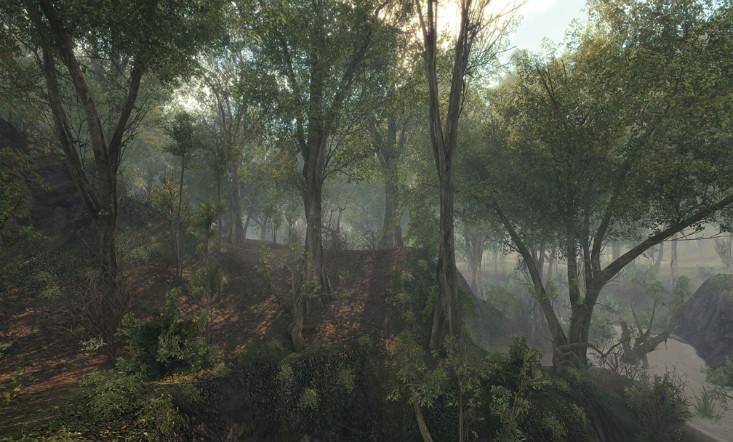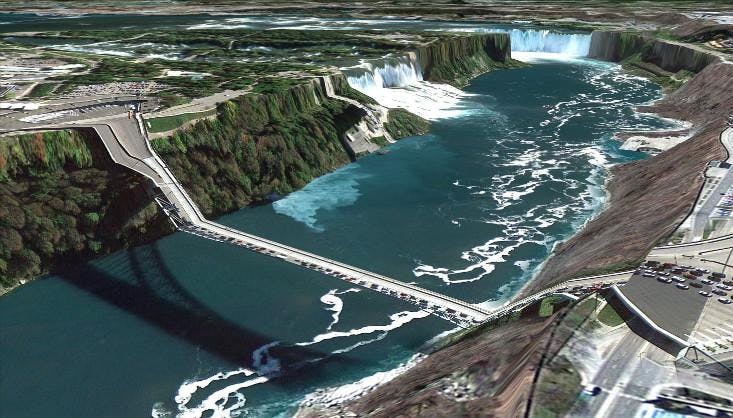
A wave of digital art, and its acceptance in the mainstream art world, has been building since computer technologies entered people’s lives over 20 years ago. Just last year, MoMA acquired 14 video games for its collection. Now comes the first-ever auction of digital art, currently online and continuing through tomorrow at Phillips, a revered, 100-year-old Park Avenue auction house. The event, called Paddles ON!, is a bellwether that digital art has really arrived, says curator Lindsay Howard.
Several works reveal the tension at the intersection of our recent pre-computer past and a future where everything is digitally encoded and Internet-connected. Joe Hamilton’s Hypergeography, Sabrina Ratté’s Aurae, and Clement Valla’s Postcards from Google Earth (seen above) take imagery of our natural world and apply or reveal layers of digital manipulation. The quirks, disruptions, and even flat-out failures in these images speak as much to our modern, computer-mediated lives as they do to the fragility and disappearance of nature.

In Mark Tribe’s Black Creek (above), the artist presents a large-format photograph of a beautifully odd landscape. It is actually a screen grab from a military video game. Tribe entered the game like a normal player but snuck away to find the hidden beauty in this virtual world. (A post on “Facts So Romantic” last month pointed out some beautiful “photographs” from the enormously popular video game Grand Theft Auto 5.) Tribe’s piece looks similar to a Hudson River School painting—that is, until you notice the odd lines and digitization that sprouts up here and there. This piece seems to both demarcate and blur the line between the real and digital worlds. But the nature of that real/digital line, and what it means, continues to be a mystery.
Artist Jamie Zigelbaum believes that making a division between the natural and the digital is a false dichotomy. If we are from nature, he says, then our digital world is a part of nature, too. His piece Pixel (below) requires human interaction to glow and change. It reveals the soft, responsive nature that technology can sometimes surprise us with. Pixel shows us that human touch still holds power over our media and culture.

In Americans!, Casey Reas gathered broadcasts of cartoons from the major American television networks, then distorted those signals by interfering with their digital encoding. Reas’ work amplifies the frenetic pacing of the programming, and by distorting the seemingly perfect, seamless media, he creates a chink in the facade of digital perfection.
Heather Sparks explores art and science at Science Sparks Art. She studied molecular genetics at The Ohio State University, has a graduate degree in science journalism from New York University, and currently lives in Brooklyn.



